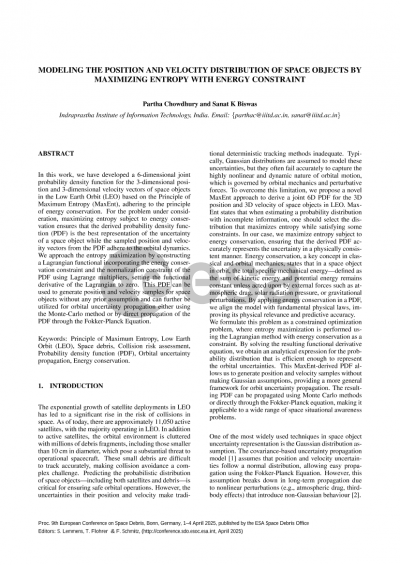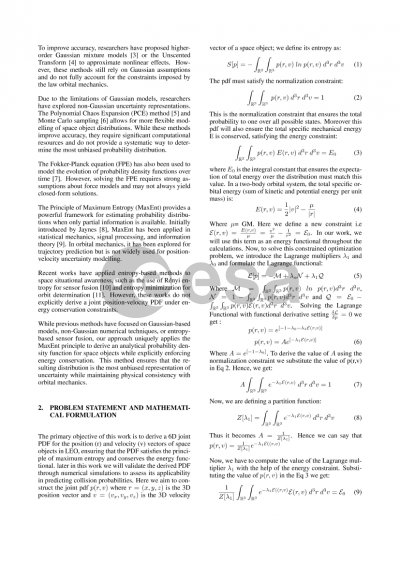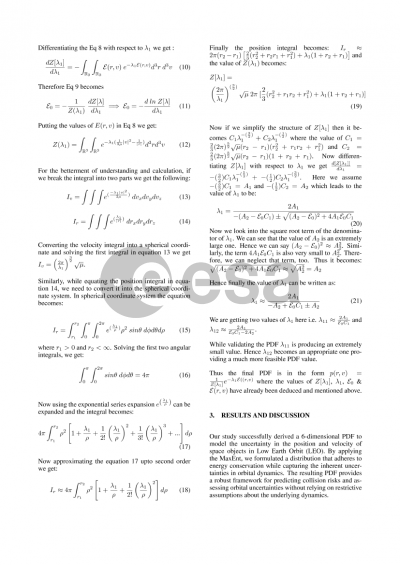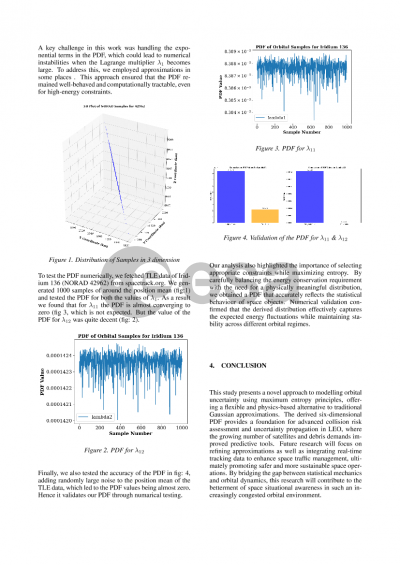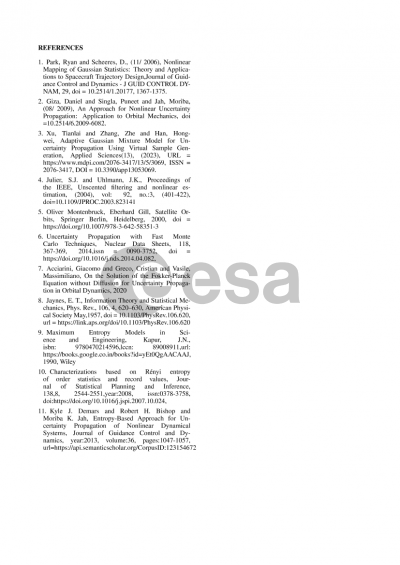Document details

Abstract
The rapid growth of satellite deployments in Low Earth Orbit contributes to an increasing risk of collisions with untracked space debris. Presently, there are around 10,350 active satellites. Most of them are functional in (Low Earth Orbit) LEO. Small debris, particularly those under 10 cm, creates a significant challenge. Thus, accurately monitoring the trajectories of such debris is vital for preventing potential collisions in the future. The inherent uncertainties in the position and velocity of both satellites and debris introduce complexities in predicting their probabilistic distribution, which is crucial for safe orbital operations. While traditional probability distributions, such as Gaussian distribution, can approximate these uncertainties, they often fail to capture orbital mechanics' dynamic and nonlinear nature accurately.
In this research work, we develop a joint probability density function for the three-dimensional position and three-dimensional velocity vectors of space objects in the Low Earth Orbit based on the principle of maximum entropy, while adhering to a fundamental physical principle - energy conservation. According to the Principle of Maximum Entropy, when establishing a probability distribution based on partial information, the primary goal should be to select the distribution that exhibits the highest entropy for some specified constraints. For the problem under consideration, maximizing entropy subject to energy conservation ensures that the derived probability density function is the best representation of the uncertainty of a space object while the sampled position and velocity vectors from the PDF adhere to the orbital dynamics.
We approach the entropy maximization by constructing a Lagrangian functional incorporating the energy conservation constraint and the normalization constraint of the PDF using Lagrange multipliers. The solution is obtained by equating the functional derivative of the Lagrangian to zero. It results in an expression for the PDF that is the best representation of the uncertainty in the position and velocity of the space object. This PDF can be used to generate position and velocity samples for space objects without any prior assumption and can further be utilized for orbit uncertainty propagation either using the Monte-Carlo method or by direct propagation of the PDF through the Fokker-Planck Equation.
Preview
